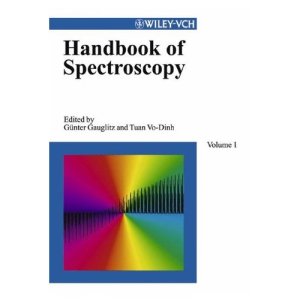Wiley-VCH Verlag GmbH, 2003. 1156 p. ISBN:3527297820
This handbook provides a straightforward introduction to the field, showing what it can do and how it does it, together with a clear, integrated and objective account of the wealth of information that can be derived from spectra. The sequence of chapters covers the whole range of the electromagnetic spectrum, and the physical processes involved, from nuclear phenomena to molecular rotation processes.
A day-by-day laboratory guide: its design based on 300 questionnaires filled-out by spectroscopists at universities, industries and research institutes
A well-structured information source containing 5 methods and 5 applications sections framed by sections on general topics
Guides users to a decision about which spectroscopic method and which instrumentation will be the most appropriate to solve their own practical problem
A time- and cost-saving reference: data tables provide the comparison of different methods in a standardized form
Rapid access to essential information
This handbook provides a straightforward introduction to the field, showing what it can do and how it does it, together with a clear, integrated and objective account of the wealth of information that can be derived from spectra. The sequence of chapters covers the whole range of the electromagnetic spectrum, and the physical processes involved, from nuclear phenomena to molecular rotation processes.
A day-by-day laboratory guide: its design based on 300 questionnaires filled-out by spectroscopists at universities, industries and research institutes
A well-structured information source containing 5 methods and 5 applications sections framed by sections on general topics
Guides users to a decision about which spectroscopic method and which instrumentation will be the most appropriate to solve their own practical problem
A time- and cost-saving reference: data tables provide the comparison of different methods in a standardized form
Rapid access to essential information

